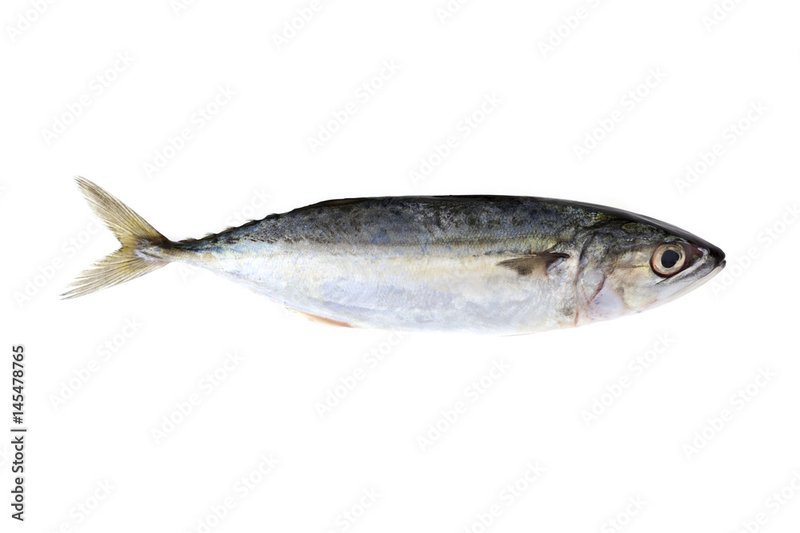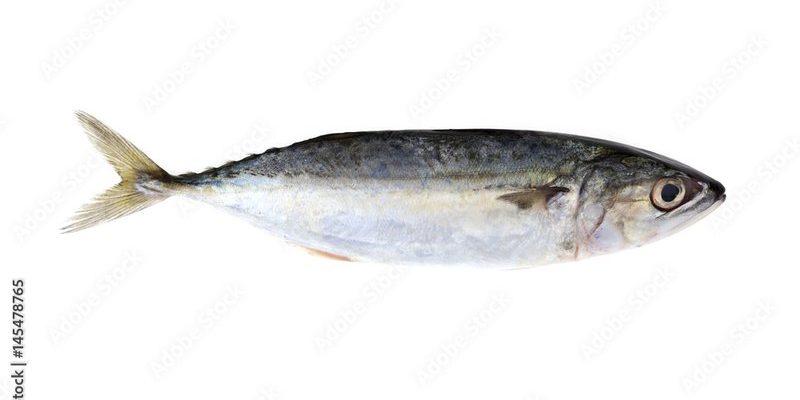
The Indian Mackerel is one of those fish that brings a burst of flavor to your plate and serves as an essential part of the ocean ecosystem. Imagine standing on a sunny beach, the waves gently lapping at your feet, while the thought of fresh grilled mackerel fills the air with its delightful aroma. This fish is not just popular for its taste, but also for its fascinating life in the ocean. Let’s dive into what makes the Indian Mackerel so intriguing.
Hailing from the tropical waters of the Indian and western Pacific Oceans, the Indian Mackerel, or *Rastrelliger kanagurta*, plays a crucial role in both commercial fishing and the local culture. It’s the kind of fish that can be found swimming alongside other species, creating a lively underwater scene. Whether you’re a seafood lover or just curious about marine life, this article will give you all the juicy details about this vibrant fish.
Physical Characteristics
The Indian Mackerel is a sleek fish known for its distinct features. Typically, it has a long, streamlined body that can grow up to 40 cm (about 16 inches) in length. Its scales are small and shiny, reflecting the sunlight as it swims. The fish usually sports a bluish-green or brown upper body with vertical stripes that run along its sides. This coloration helps it blend in with the water, providing some protection from predators.
Another interesting aspect of the Indian Mackerel is its dorsal fin, which is quite pronounced. This fin can be quite helpful in stabilizing the fish while it’s darting through the water at speeds of up to 4.6 km/h (around 2.9 mph). This speed allows it to evade larger predators like sharks and larger fish. Plus, the Indian Mackerel is a schooling fish, often seen swimming in groups, which further aids their defense against threats.
Habitat and Distribution
You can find the Indian Mackerel primarily in tropical and subtropical waters. They prefer the shallow coastal areas, typically no deeper than 200 meters (656 feet), where they can find an abundant food supply. Think of it as their favorite dining spot! These regions often include coral reefs and continental shelves, which provide a nutritious environment for the fish to thrive.
The geographical distribution of Indian Mackerel is quite vast. They can be found from the eastern coast of Africa all the way to the waters of Southeast Asia and Australia. This wide range means that they are a key species in many local fisheries, supporting the livelihoods of countless fishermen. So, whether you’re enjoying a mackerel dish in India or Indonesia, you’re experiencing a fish that’s a staple in many cultures.
Diet and Feeding Habits
The Indian Mackerel is known for its omnivorous diet, which means it munches on a variety of food sources. You might wonder what’s on the menu. Primarily, these fish feed on zooplankton, small crustaceans, and even tiny fish. Picture them cruising through the water, snapping up these tasty morsels as they go. This diet not only supports their energy needs but also contributes to their rapid growth.
The mackerel’s feeding strategy is fascinating. They are often seen swimming near the surface, where food is most abundant. They have a unique way of hunting that involves speed and agility, allowing them to dart toward their prey in quick bursts. Fish like the Indian Mackerel play an integral role in the marine food web, serving as both predator and prey.
Reproduction and Lifespan
When it comes to reproduction, Indian Mackerel have a remarkable life cycle. They typically reach sexual maturity at around 1-2 years of age, which is relatively quick for fish. The spawning season usually occurs from April to October, with peak activity during the warmer months. During this time, females release a large number of eggs into the water, where fertilization takes place externally.
This fascinating reproductive strategy leads to the production of millions of eggs, increasing the chances that some will survive to adulthood. The lifespan of an Indian Mackerel generally ranges from 3 to 5 years, which can vary based on environmental conditions and predation pressures. It’s a race against time in the ocean, as many face the threat of larger fish, birds, and humans.
Importance in Fisheries and Cuisine
The Indian Mackerel is a significant player in the fishing industry, especially in South and Southeast Asia. These fish are not only sought after for their rich flavor but also for their nutritional benefits. A delicious source of protein, mackerel is rich in omega-3 fatty acids, which are essential for maintaining heart health. With its flavorful, oily flesh, it is a favorite in many traditional dishes.
In various cultures, Indian Mackerel is often enjoyed grilled, fried, or even curried. The fish’s strong flavor pairs well with bold spices, making it a staple in many kitchens. You can often find it prepared with coconut milk in coastal regions or served with rice and vegetables. Additionally, its popularity has led to various preservation methods, such as smoking and pickling, ensuring that this fish can be enjoyed year-round.
Ecological Role
The Indian Mackerel is not just important for human consumption but also plays a vital role in the marine ecosystem. As a smaller predator, it helps regulate the populations of its prey, such as zooplankton and small fish. This balance is crucial for maintaining a healthy environment in the ocean. Additionally, mackerel serves as a food source for larger fish, seabirds, and marine mammals, contributing to the overall biodiversity of the ecosystem.
Interestingly, the presence of Indian Mackerel in a particular area can also indicate the health of that marine environment. When their populations are thriving, it’s usually a sign that the ecosystem is in good shape. However, overfishing and pollution can disrupt this balance, leading to declines in their numbers and affecting the larger marine community.
Conservation Status
The conservation status of the Indian Mackerel varies by region, but overall, they are considered to be of low concern. However, this does not mean they are free from threats. Overfishing poses a significant risk, particularly in areas where fishing practices are unsustainable. The demand for mackerel in the culinary world is high, leading to concerns about the long-term sustainability of their populations.
Efforts are underway in various regions to promote sustainable fishing practices. This includes regulating catch limits, monitoring fish populations, and encouraging responsible consumption. If you’re a seafood lover, participating in these sustainable practices can help ensure that Indian Mackerel remains a staple for years to come.
Interesting Facts about Indian Mackerel
| Common Name: | Indian Mackerel |
| Scientific Name: | *Rastrelliger kanagurta* |
| Size: | Up to 40 cm (16 inches) |
| Habitat: | Tropical and subtropical coastal waters |
| Diet: | Zooplankton, small crustaceans, tiny fish |
| Speed: | Up to 4.6 km/h (2.9 mph) |
| Lifespan: | 3 to 5 years |
The Indian Mackerel is more than just a fish; it’s a fascinating creature that contributes to both culinary traditions and the health of our oceans. With its striking appearance and ecological importance, it continues to captivate fish lovers and marine enthusiasts alike. So next time you’re enjoying a mackerel dish, remember the journey this fish has made from the vibrant waters of the ocean to your plate.
FAQ
What does Indian Mackerel taste like?
Indian Mackerel has a rich, oily flavor that many seafood lovers enjoy. It is often described as having a slightly stronger taste compared to other white fish, making it perfect for grilling or incorporating into flavorful dishes with spices and sauces. Whether you’re enjoying it grilled, fried, or baked, its unique taste makes it a versatile addition to many meals.
Can Indian Mackerel be farmed?
While most Indian Mackerel is caught in the wild, there are some aquaculture efforts aimed at farming this species. However, it is not as common as other fish species due to the challenges associated with replicating their natural habitat. Farming has the potential to help meet demand while ensuring sustainable practices are in place. As technology advances, efforts may increase to culture Indian Mackerel successfully.
How can you tell if Indian Mackerel is fresh?
Fresh Indian Mackerel should have a bright, shiny skin with no off-putting odor. The flesh should be firm to the touch and have a mild, ocean-like smell. When selecting mackerel at the market, look for clear eyes and bright red gills; these are indicators of freshness. If buying fillets, make sure they are moist but not slimy, and keep them refrigerated.
What are some common dishes made with Indian Mackerel?
Indian Mackerel is a staple in various cuisines and can be prepared in numerous ways. Some common dishes include mackerel curry, grilled mackerel with spices, and pickled mackerel. In coastal regions, you might find it served with rice and a side of vegetables, while in other areas, it may be enjoyed smoked or cured. Each dish highlights the fish’s rich flavor and versatility.
Are there health benefits to eating Indian Mackerel?
Yes, Indian Mackerel is packed with health benefits. It is an excellent source of high-quality protein and is rich in omega-3 fatty acids, which are beneficial for heart health. These fatty acids can help lower blood pressure and reduce the risk of heart disease. Additionally, mackerel contains essential vitamins and minerals, making it a nutritious addition to your diet.
Where can I buy Indian Mackerel?
You can find Indian Mackerel at many local fish markets, grocery stores, and seafood suppliers, especially those that focus on fresh or frozen products. If you’re in an area near the coast, visiting a fishermen’s market might yield the freshest options. Online seafood retailers also offer deliveries of mackerel, ensuring you can enjoy it no matter where you are.
Is Indian Mackerel sustainable?
The sustainability of Indian Mackerel varies by region and fishing practices. While they are not currently overfished globally, local populations may be threatened by overfishing if not managed properly. When choosing mackerel, look for seafood from certified sustainable fisheries to ensure that your purchase supports responsible fishing practices and helps maintain healthy fish populations.

